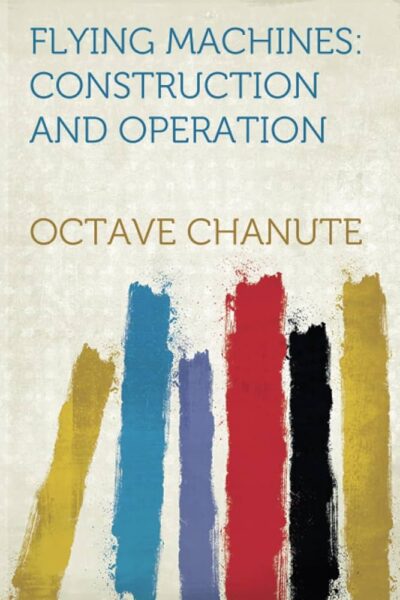44 Results in the "Non-Fiction" category
Biography & Memoir (416)
Business & Finance (25)
Children’s Fiction (4)
Education & Learning (4)
Fantasy (195)
Fiction (1979)
Health & Wellness (20)
Historical Fiction (362)
Horror (57)
Literary Fiction (456)
Novel (260)
Others (1)
Philosophy (58)
Poetry (160)
Politics & History (84)
posts (3)
Psychology (46)
Romance Novel (163)
Science & Technology (28)
Science Fiction (74)
Self-Help & Personal Development (99)
The Ultimate Book Lists (1)
Thriller / Mystery (528)
Travel & Adventure (2)
True Crime (53)
view (98)
Young Adult (95)
-
Chapter
From Felix The Cat To Anime
 FROM FELIX THE CAT TO ANIME � Animation technology has come a long way. Early animation involved drawing or painting stills being projected with a device known as a “magic lantern.” � Manga is a distinct style of Japanese cartoons that started in the late 1800s. Manga has several genres, but the rendering of the human figures tends to be similar across time, artists, and genres. � A cartoon is any drawn or painted illustration. Once a…
FROM FELIX THE CAT TO ANIME � Animation technology has come a long way. Early animation involved drawing or painting stills being projected with a device known as a “magic lantern.” � Manga is a distinct style of Japanese cartoons that started in the late 1800s. Manga has several genres, but the rendering of the human figures tends to be similar across time, artists, and genres. � A cartoon is any drawn or painted illustration. Once a…-
282.5 K • Ongoing
-
-
Chapter
Friday
 Friday opens with a reflective Cyrus Shams engaged in an intimate conversation with Orkideh at the Brooklyn Museum. Orkideh, a terminally ill artist, shares her experience while exhibiting her artwork, as she faces the inevitability of death. Cyrus, who is deeply unsettled by thoughts of his own mortality, admits to a dark and distressing thought, hinting that he might "kill himself soon." However, he is immediately troubled by the phrase, as it sounds both mechanical and empty. He expresses a deep longing…
Friday opens with a reflective Cyrus Shams engaged in an intimate conversation with Orkideh at the Brooklyn Museum. Orkideh, a terminally ill artist, shares her experience while exhibiting her artwork, as she faces the inevitability of death. Cyrus, who is deeply unsettled by thoughts of his own mortality, admits to a dark and distressing thought, hinting that he might "kill himself soon." However, he is immediately troubled by the phrase, as it sounds both mechanical and empty. He expresses a deep longing…-
245.7 K • Ongoing
-
-
Chapter
Friday
 Friday begins with Cyrus Shams, who, as he walks from the Brooklyn Museum to Prospect Park, reflects deeply on his life and recent conversation with Orkideh about martyrdom. Her words about the complex notion of martyrdom linger in his mind, causing him to question the core differences between the intense desires to live and to die. His reflection on life, its meaning, and the inevitability of death takes an unexpected turn as he finds symbolism in the simple, everyday acts of life, such as tying his…
Friday begins with Cyrus Shams, who, as he walks from the Brooklyn Museum to Prospect Park, reflects deeply on his life and recent conversation with Orkideh about martyrdom. Her words about the complex notion of martyrdom linger in his mind, causing him to question the core differences between the intense desires to live and to die. His reflection on life, its meaning, and the inevitability of death takes an unexpected turn as he finds symbolism in the simple, everyday acts of life, such as tying his…-
245.7 K • Ongoing
-
-
Chapter
Freedom
 Freedom in artistic expression is a topic that sparks debate when discussing whether artists carry a social responsibility. Some argue that artists should use their work to address pressing social issues, while others believe that such expectations may limit their freedom and compromise creative integrity. From this perspective, art is most impactful when it is created without the burden of serving an external agenda, allowing meaning to emerge naturally rather than being dictated by an imposed…
Freedom in artistic expression is a topic that sparks debate when discussing whether artists carry a social responsibility. Some argue that artists should use their work to address pressing social issues, while others believe that such expectations may limit their freedom and compromise creative integrity. From this perspective, art is most impactful when it is created without the burden of serving an external agenda, allowing meaning to emerge naturally rather than being dictated by an imposed…-
341.4 K • Ongoing
-
-
Chapter
Four Telegrams
 The chapter titled "Four Telegrams" represents a critical moment in the historical buildup to the Civil War, offering a glimpse into the tense communications that shaped the early decisions of Confederate leadership. Dated April 10, 1861, the telegrams exchanged between Confederate General Pierre Gustave Toutant Beauregard and L. P. Walker, the Confederate Secretary of War, reveal a pivotal moment of military strategy. These exchanges, beginning with a telegram from Montgomery, urged immediate action…
The chapter titled "Four Telegrams" represents a critical moment in the historical buildup to the Civil War, offering a glimpse into the tense communications that shaped the early decisions of Confederate leadership. Dated April 10, 1861, the telegrams exchanged between Confederate General Pierre Gustave Toutant Beauregard and L. P. Walker, the Confederate Secretary of War, reveal a pivotal moment of military strategy. These exchanges, beginning with a telegram from Montgomery, urged immediate action…-
547.0 K • Ongoing
-
-
Chapter
Forbearance
 Forbearance marked the period between January 9–12 as Major Anderson and his troops at Fort Sumter witnessed the Star of the West depart after being fired upon by Fort Moultrie. Despite the clear provocation, Anderson ordered his gunners not to retaliate, which frustrated Captain Doubleday. Doubleday believed that firing back was their duty, seeing it as a necessary act of defense for the American flag. He argued that the failure to act could have jeopardized their position, which was viewed as shocking…
Forbearance marked the period between January 9–12 as Major Anderson and his troops at Fort Sumter witnessed the Star of the West depart after being fired upon by Fort Moultrie. Despite the clear provocation, Anderson ordered his gunners not to retaliate, which frustrated Captain Doubleday. Doubleday believed that firing back was their duty, seeing it as a necessary act of defense for the American flag. He argued that the failure to act could have jeopardized their position, which was viewed as shocking…-
547.0 K • Ongoing
-
-
 Flying Machines: Construction and Operation is a 1908 book by the aviation pioneer, William J. Hammer. It provides detailed instructions on building and operating early flying machines, covering the principles of flight, materials, and design. The book reflects the early 20th century’s fascination with flight and offers insights into the development of aviation technology.
Flying Machines: Construction and Operation is a 1908 book by the aviation pioneer, William J. Hammer. It provides detailed instructions on building and operating early flying machines, covering the principles of flight, materials, and design. The book reflects the early 20th century’s fascination with flight and offers insights into the development of aviation technology.-
2.6 K • Nov 8, '24
-
2.1 K • Nov 8, '24
-
2.2 K • Nov 8, '24
-
-
Chapter
First Day
 On March 5, the first day of Abraham Lincoln’s presidency, he was immediately thrust into the turbulent realities of leading a deeply divided nation. He received a letter from William Seward, who had agreed to serve as Secretary of State, confirming his acceptance of the position. Seward reflected on his resignation from Congress, acknowledging the delicate political landscape and how fortunate he felt to have avoided major fallout from his decision. Despite their past rivalry during the Republican…
On March 5, the first day of Abraham Lincoln’s presidency, he was immediately thrust into the turbulent realities of leading a deeply divided nation. He received a letter from William Seward, who had agreed to serve as Secretary of State, confirming his acceptance of the position. Seward reflected on his resignation from Congress, acknowledging the delicate political landscape and how fortunate he felt to have avoided major fallout from his decision. Despite their past rivalry during the Republican…-
547.0 K • Ongoing
-
-
Chapter
Firewood
 Firewood became a symbol of the harsh realities faced by Major Anderson and his garrison at Fort Sumter during the cold days and nights of late March 1861. As the storm clouds loomed over Charleston, both literally and metaphorically, the fort’s defenses were being pushed to their limits. On March 26, Chief Engineer Foster reported that the last of the temporary buildings on the parade ground had been demolished, and the soldiers were resorting to burning lumber and even a condemned gun carriage to fuel…
Firewood became a symbol of the harsh realities faced by Major Anderson and his garrison at Fort Sumter during the cold days and nights of late March 1861. As the storm clouds loomed over Charleston, both literally and metaphorically, the fort’s defenses were being pushed to their limits. On March 26, Chief Engineer Foster reported that the last of the temporary buildings on the parade ground had been demolished, and the soldiers were resorting to burning lumber and even a condemned gun carriage to fuel…-
547.0 K • Ongoing
-
-
Chapter
Fatal Error
 Fatal error marked a pivotal moment on April 5, when President Lincoln found himself grappling with the consequences of a critical mistake. He had assigned the same warship, the Powhatan, to two separate relief expeditions. Late that night, after receiving a troubling telegram from New York, Lincoln quickly convened with Secretary of State William Seward and Navy Secretary Gideon Welles. Upon reading the telegram, Lincoln expressed his disbelief and took full responsibility for the mishap, acknowledging…
Fatal error marked a pivotal moment on April 5, when President Lincoln found himself grappling with the consequences of a critical mistake. He had assigned the same warship, the Powhatan, to two separate relief expeditions. Late that night, after receiving a troubling telegram from New York, Lincoln quickly convened with Secretary of State William Seward and Navy Secretary Gideon Welles. Upon reading the telegram, Lincoln expressed his disbelief and took full responsibility for the mishap, acknowledging…-
547.0 K • Ongoing
-
- Previous 1 … 40 41 42 … 97 Next

